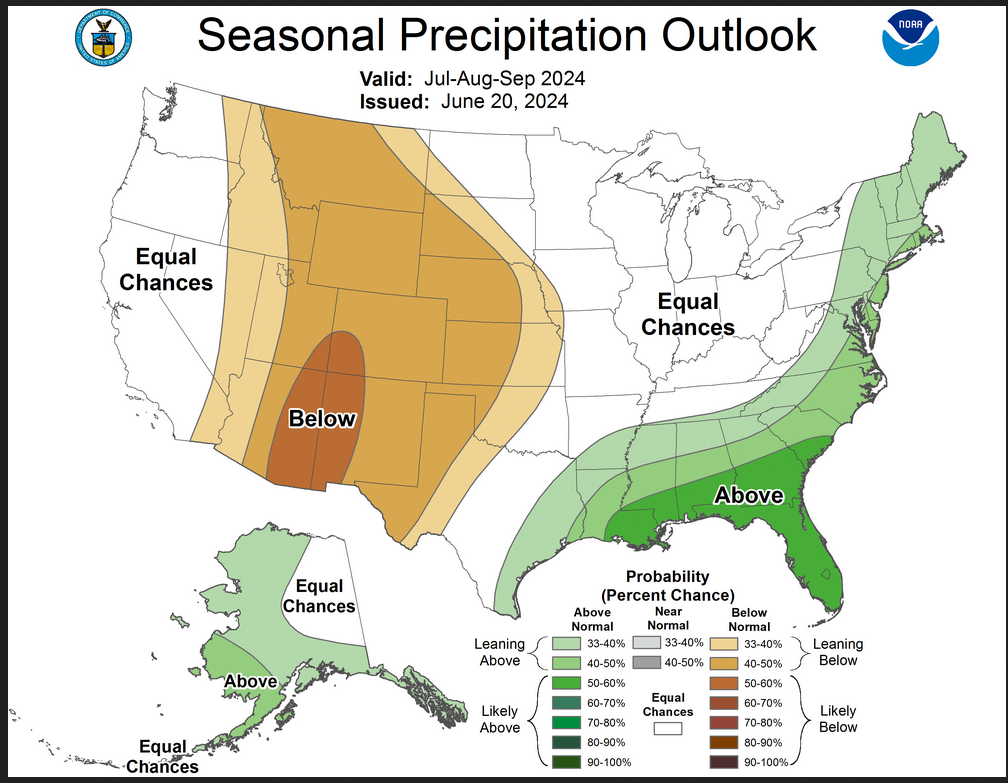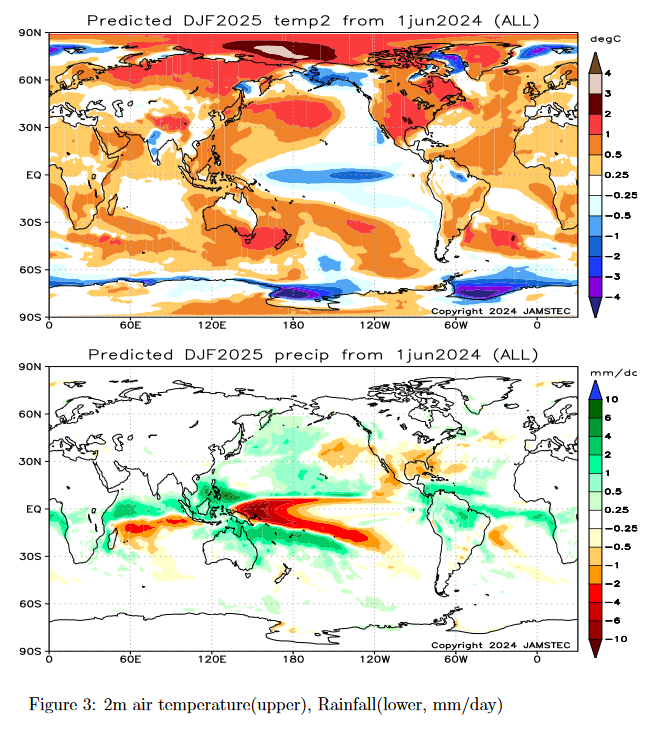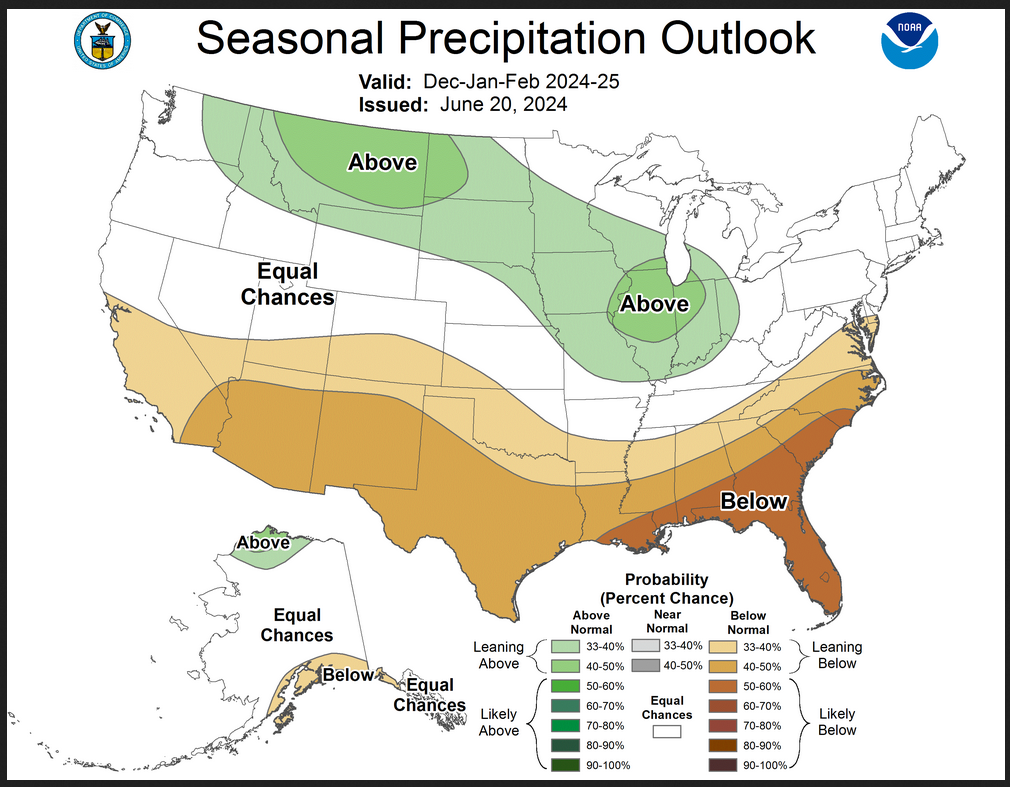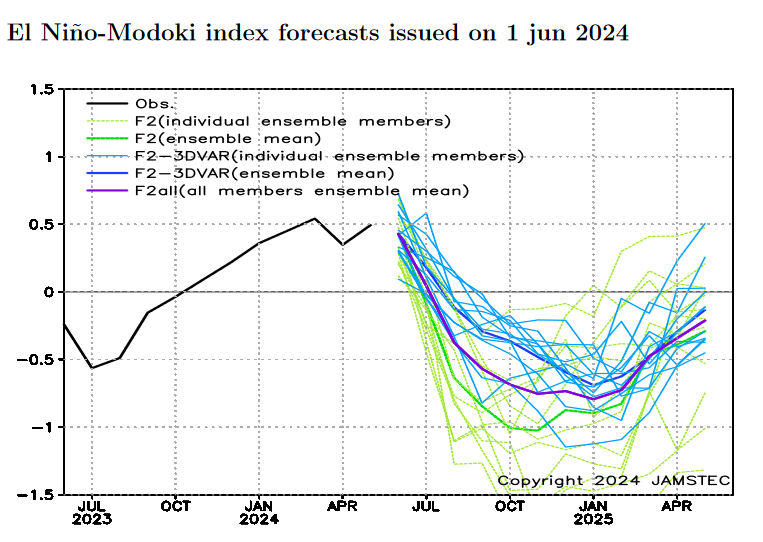
The Japan Agency for Marine-Earth Science and Technology, or JAMSTEC, is a Japanese national research institute for marine-earth science and technology
From the JAMSTEC Discussion:
“The most recent observations indicate that the El Niño is now almost over, and there are weak signs of a La Niña. The SINTEX-F ensemble mean predicts that a La Niña Modoki will develop in the boreal autumn. However, there is a large uncertainty in the occurrence timing and amplitude.”
Although it is a World forecast, it includes a forecast for North America since North America is part of the World. One might try to compare it to the NOAA Outlook we published yesterday which can be accessed HERE.
First, we take a look at the forecasted sea surface temperature anomalies (SSTA). JAMSTEC starts by forecasting the SSTA and Nino 3.4 Index on the first day of the month and from there it usually takes their models about two weeks to produce their seasonal forecast. I received it from JAMSTEC on May 14 close to when NOAA issued their Seasonal Update this month. The JAMSTEC model runs are based on conditions as of June 1, 2024. The NOAA Seasonal Outlook is based on conditions closer to the time when it was issued.
We do not have a full three-season forecast from JAMSTEC this month. We have forecast maps for JAS, SON and DJF so it is really an eight-month forecast as JAS and SON overlap a bit. For each of these three-month Outlooks, I also show the corresponding NOAA Outlook. The two are remarkably similar which is very unusual.
We also have single-month forecasts for July, August and September 2024. I have a single-month outlook for July from NOAA but not single-month outlooks for August and September so I did not show those comparisons.
Let’s take a look.
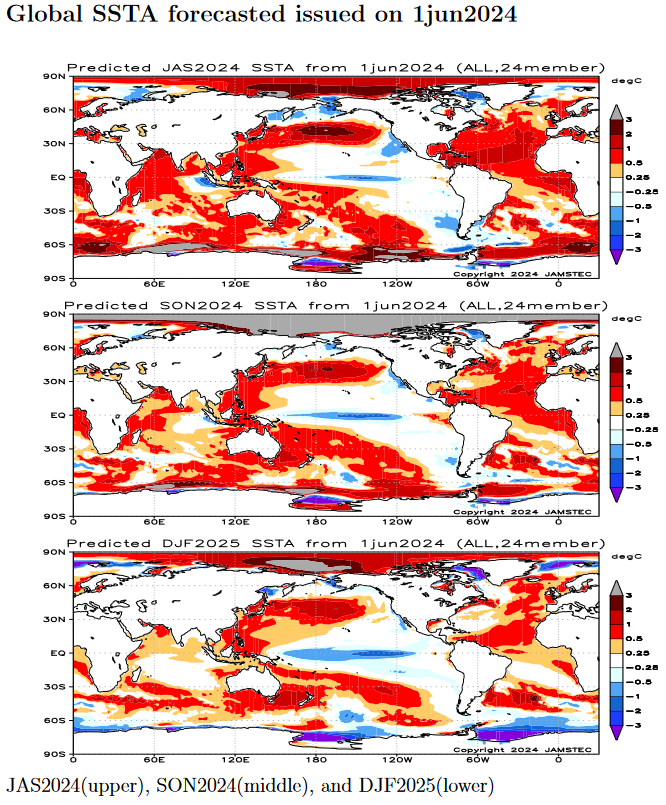
| This shows their forecast of sea surface temperature anomalies at three points in time. Blue is cold and is associated with La Nina if it occurs in the Nino 3.4 measurement areas. You no longer can see the El Nino tongue of warm water extending from Peru to the west in the JAS image but look at that blob of cool (anomaly) water to the west i.e. by this point in time this has Modoki characteristics that impact the Walker circulation. SON and DJF also show La Nina but are increasingly to the west and may not be in the Nino 3.4 measurement area. I have written about that before. It raises questions about the reliability of our current approach to thinking about the ENSO Cycle. This is covered in another article that can be accessed HERE. But JAMSTEC is showing a relatively normal ocean off the coast of much of the U.S. coasts which probably explains their forecast.
Of interest also is the cold water of the West Coast of the U.S. and the warm water between Africa and the north coast of South America. JAMSTEC uses the same definition of Normal (climatology) as NOAA. JAMSTEC does a better job at characterizing La Ninas and El Ninos than NOAA. JAMSTEC provides me with a lot of other information that I do not include in my articles to keep them to a manageable size for readers. That material is the atmospheric pressure patterns. |
Some Readers will have to click on “Read More” to read the rest of the article which you need to read to see the forecasts. I can only include a certain amount of material in the lede.
Then we look at three forecasts. As discussed earlier, JAMSTEC tries to work with meteorological seasons and this month it does not line up perfectly since we have JAS, SON and DJF. Last month we had JJA, SON, and DJF so that lined up perfectly.
Now we look at the three seasonal forecasts.
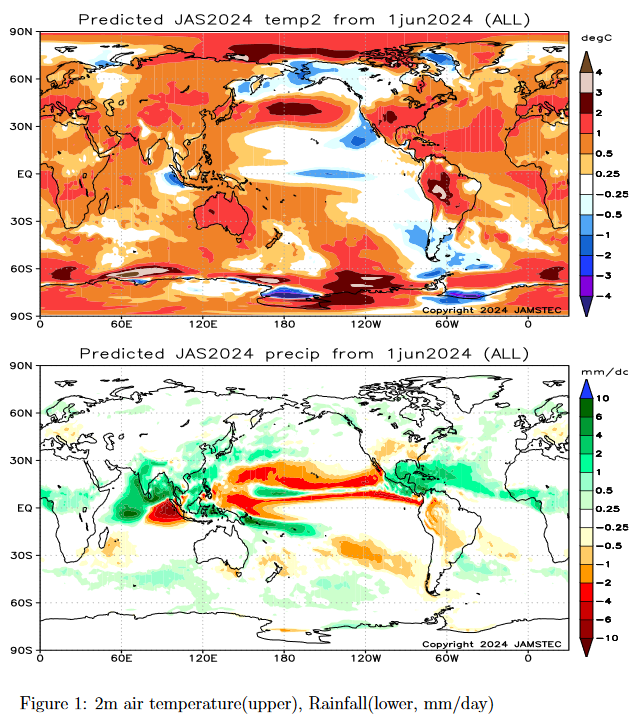
| The above covers July/August/September which is mostly Summer.
“The SINTEX-F predicts that most parts of the globe will experience a hotter-than-normal condition in the July–September average (in particular, the central part of the U.S.A. and the northcentral part of the South American Continent), except for eastern Brazil and some parts of Eurasia. Alaska, western Canada, southern Chile, and Argentina will experience a colder-than-normal condition. ” “As regards the rainfall in the July–September average, a drier-than-normal condition is predicted for the southern U.S.A., California, many parts of the South American Continent, Sumatra, and some parts of eastern Europe. In contrast, Alaska, some parts of Canada, Florida, Central America, the Caribbean, the northern coastal part of the South American Continent, West Africa, Central Africa, India, Sri Lanka, Nepal, Bhutan, most of Indochina, the Philippines, central/eastern Indonesia, East Asia, and Norway, and some parts of Russia will experience a wetter-than-normal condition.” “The model predicts that most of Japan will be hotter and wetter than normal in the July–September average.” |
NOAA Precipitation Outlook for this period.
| The JAMSTEC Outlook looks a lot like the NOAA Outlook. |
Sep/Oct/Nov
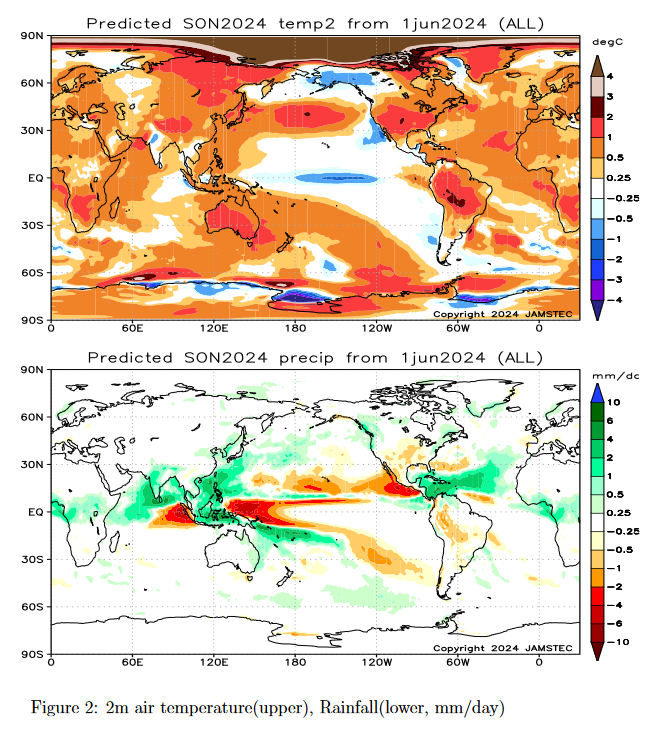
| The above covers September/October/November 2024 which is Fall or Autumn as you prefer.
Here is the interpretation from the JAMSTEC discussion: ” In the boreal autumn, the SINTEX-F still predicts that most parts of the globe will experience a warmer-than-normal condition, except for Central America, southern Chile, Argentina, Thailand, and some parts of Russia. Alaska, western Canada, and northern India will experience a colder-than-normal condition.” ” In the boreal autumn, a drier-than-normal condition is predicted for most of the U.S.A., Mexico, many parts of the South American Continent, and Sumatra. In contrast, some parts of Canada, some parts of Central America, the Caribbean, the northern coastal part of the South American Continent, eastern Australia, some parts of West Africa, some parts of Central Africa, East Africa, India, Sri Lanka, Nepal, Bhutan, many parts of Indochina, the Philippines, eastern/central Indonesia, and East Asia will experience a wetter-than-normal condition.” ” In the autumn, the model still predicts that most of Japan will be warmer.” |
NOAA Precipitation Outlook for this period.
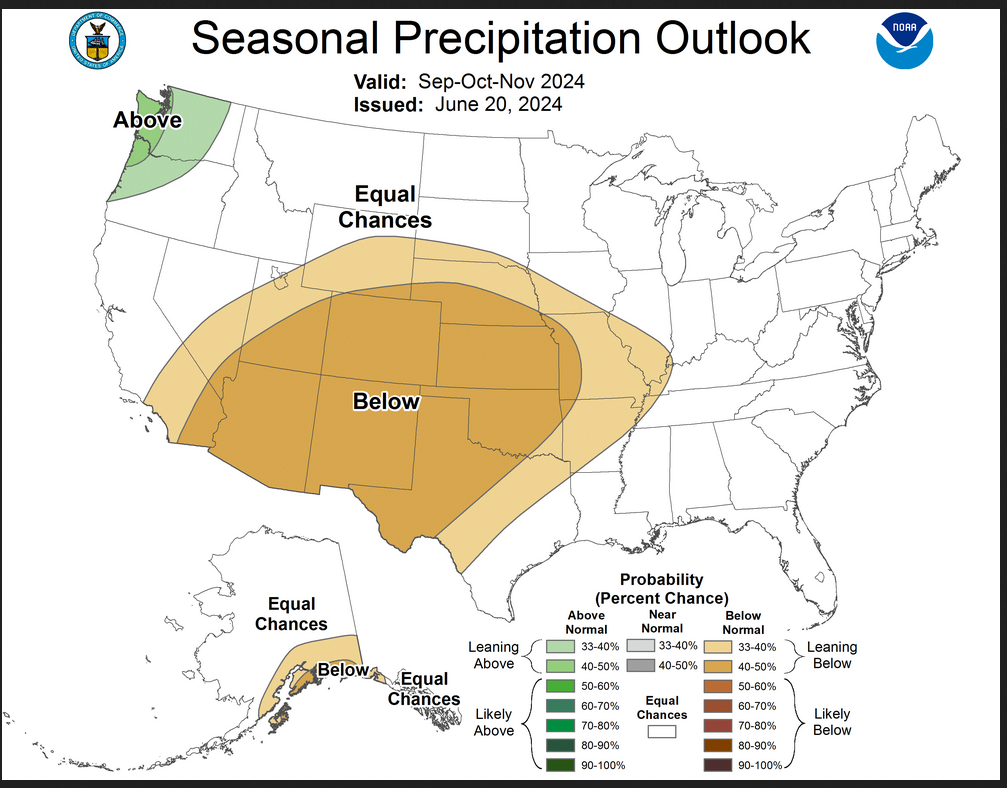
| The JAMSTEC Outlook looks a lot like the NOAA Outlook. |
| The above covers December/January/February which is Winter.
JAMSTEC does not provide a commentary for the third season map but the reader can interpret it themselves.
|
NOAA Precipitation Outlook for this period.
| The JAMSTEC Outlook looks a lot like the NOAA Outlook. |
Now I am going to provide their single-month forecasts for July, August and September 2024.
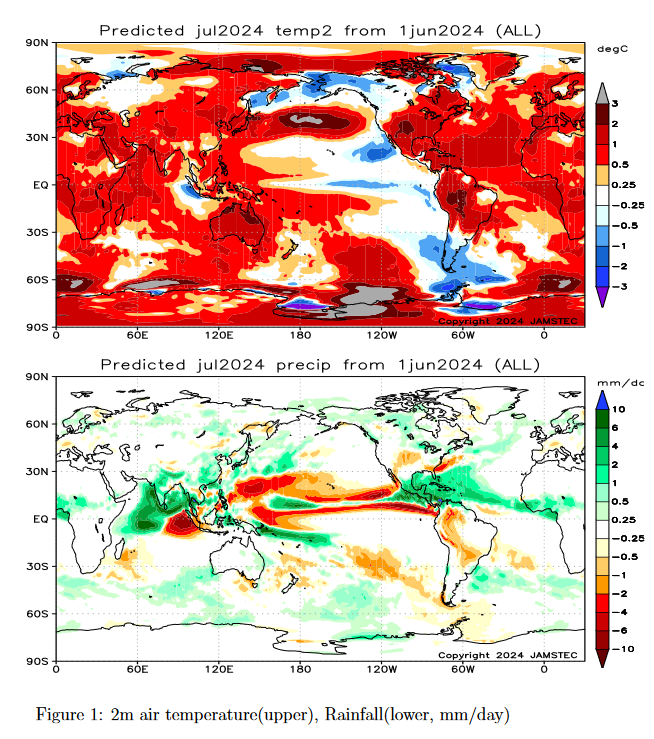
| The above is the single month of July 2024. It is interesting as a world forecast but since the U.S. is part of the world it also provides a U.S. forecast. |
| The above is the single month of August 2024. It is a world forecast but you can clearly see the forecast for the U.S. |
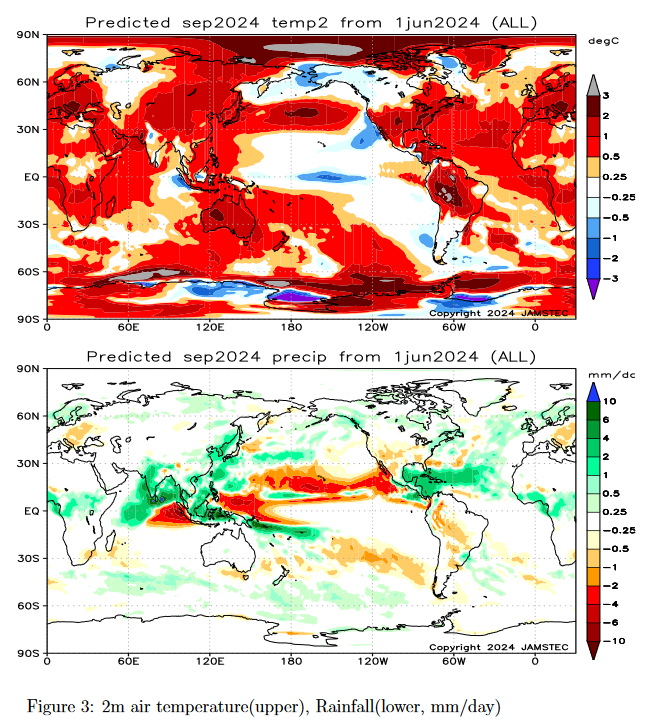
| The above is the single month of September 2024. |
Now we look at the key indices used by JAMSTEC in making their forecast. Perhaps I should have presented these first.
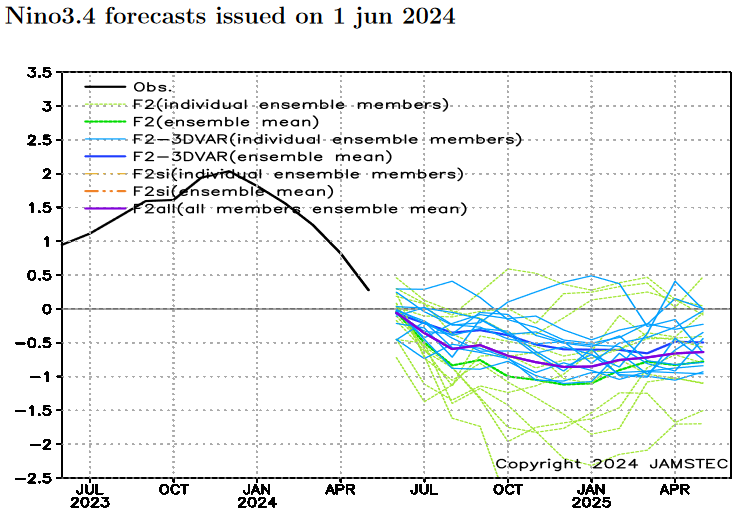
| This forecast is for a marginal La Nina which is different from what NOAA is forecasting. |
| I am showing the Modoki Index this month. This index shows that by Fall, the La Nina will take on Modoki characteristics. If I remember correctly the impacts Eastern Asia more than the U.S. |
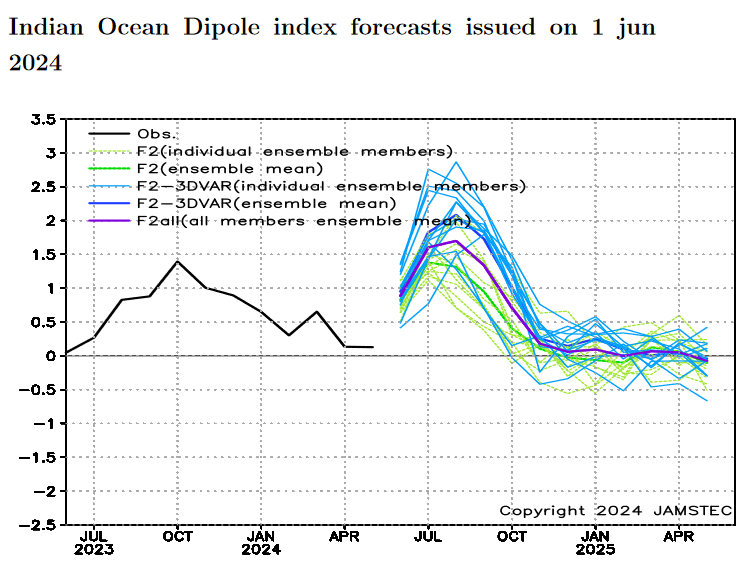
| We will be having a Positive IOD. THIS article might help explain what it means. You should be able to see the forecasted impact of a positive IOD in the JJA forecast maps as it impacts Australia, Eastern Africa and India. |
And here is the short JAMSTEC Discussion which I have already included with each of the seasonal forecast maps.
ENSO forecast:
The most recent observations indicate that the El Niño is now almost over, and there are weak signs of a La Niña. The SINTEX-F ensemble mean predicts that a La Niña Modoki will develop in the boreal autumn. However, there is a large uncertainty in the occurrence timing and amplitude.
Indian Ocean forecast:
A higher-than-normal temperature is present in the tropical Indian Ocean, featuring a positive phase of the Indian Ocean Basin Mode. However, warmer temperatures in the west suggest the development of a positive phase of the Indian Ocean Dipole. The SINTEX-F predicts that a positive Indian Ocean Dipole will develop in the coming season and start to decay in the boreal autumn.
Regional forecast:
The SINTEX-F predicts that most parts of the globe will experience a hotter-than-normal condition in the July–September average (in particular, the central part of the U.S.A. and the northcentral part of the South American Continent), except for eastern Brazil and some parts of Eurasia. Alaska, western Canada, southern Chile, and Argentina will experience a colder-than-normal condition. In the boreal autumn, the SINTEX-F still predicts that most parts of the globe will experience a warmer-than-normal condition, except for Central America, southern Chile, Argentina, Thailand, and some parts of Russia. Alaska, western Canada, and northern India will experience a colder-than-normal condition.
As regards the rainfall in the July–September average, a drier-than-normal condition is predicted for the southern U.S.A., California, many parts of the South American Continent, Sumatra, and some parts of eastern Europe. In contrast, Alaska, some parts of Canada, Florida, Central America, the Caribbean, the northern coastal part of the South American Continent, West Africa, Central Africa, India, Sri Lanka, Nepal, Bhutan, most of Indochina, the Philippines, central/eastern Indonesia, East Asia, and Norway, and some parts of Russia will experience a wetter-than-normal condition. In the boreal autumn, a drier-than-normal condition is predicted for most of the U.S.A., Mexico, many parts of the South American Continent, and Sumatra. In contrast, some parts of Canada, some parts of Central America, the Caribbean, the northern coastal part of the South American Continent, eastern Australia, some parts of West Africa, some parts of Central Africa, East Africa, India, Sri Lanka, Nepal, Bhutan, many parts of Indochina, the Philippines, eastern/central Indonesia, and East Asia will experience a wetter-than-normal condition.
The model predicts that most of Japan will be hotter and wetter than normal in the July–September average. In the autumn, the model still predicts that most of Japan will be warmer.
–
| I hope you found this article interesting and useful |
